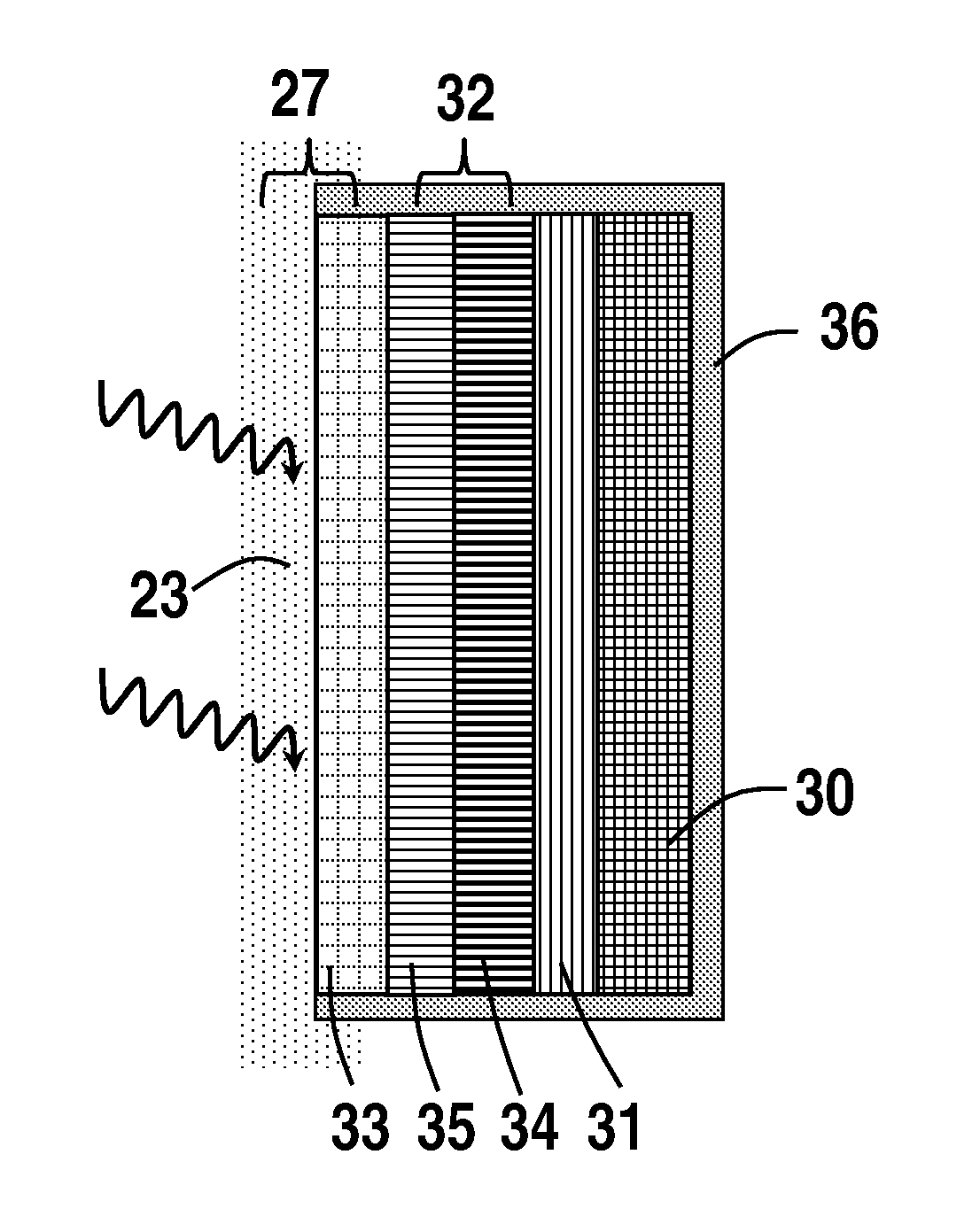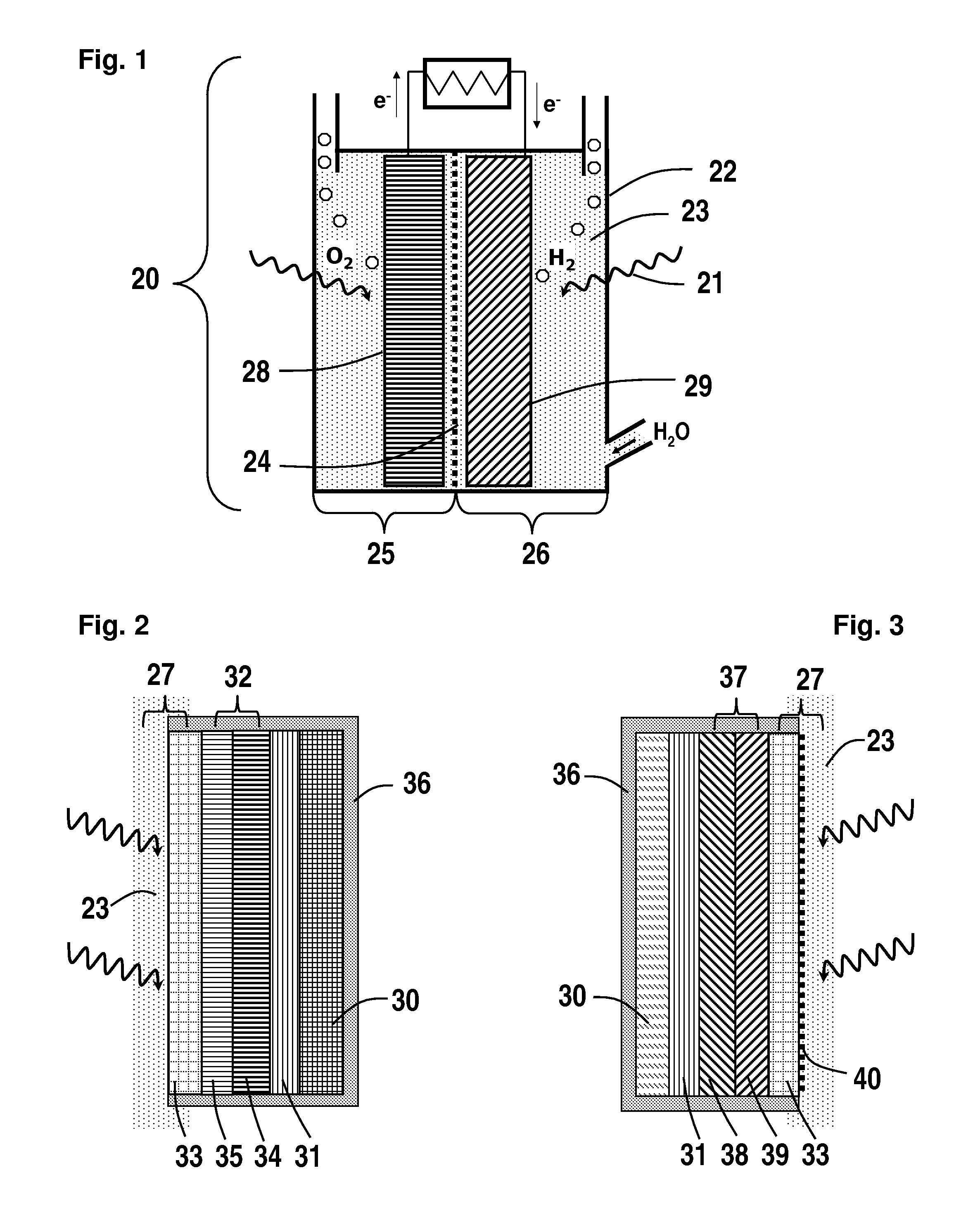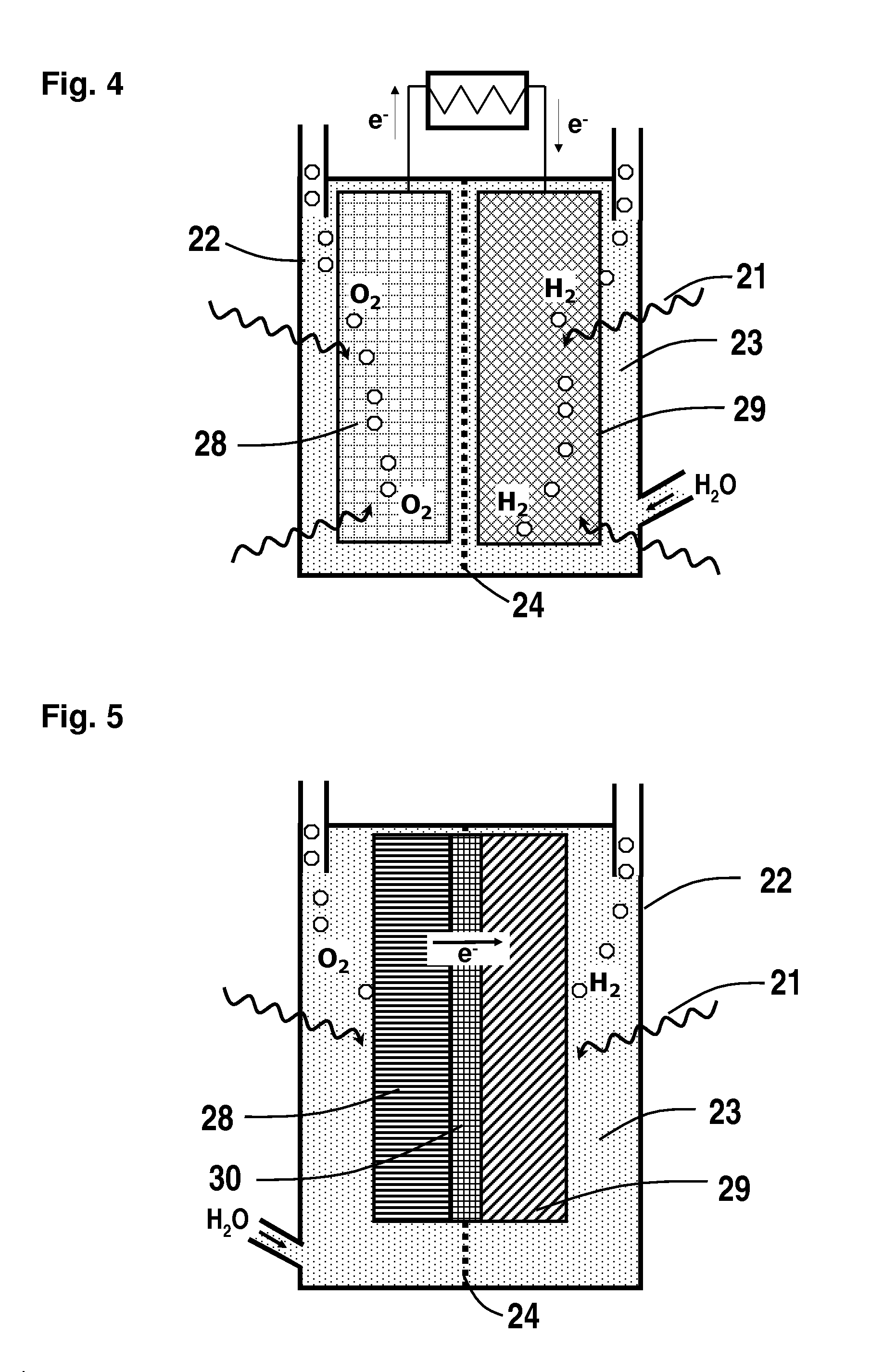Photoelectrochemical generation of hydrogen
a photoelectrochemical and hydrogen technology, applied in the field of photoelectrolysis of water, can solve the problems of lack of efficient light absorption, water photoelectrolysis, and semiconductor corrosion, and achieve the effects of high efficiency and stability, sufficient voltage, and efficient and stabl
- Summary
- Abstract
- Description
- Claims
- Application Information
AI Technical Summary
Benefits of technology
Problems solved by technology
Method used
Image
Examples
Embodiment Construction
[0021]This invention provides a new hybrid bi-photoelectrode PEC system for hydrogen generation. A preferred embodiment combines the concepts of bi-photoelectrode and hybrid configurations to produce a hybrid bi-photoelectrode PEC system. The schematic of the PEC system 20 in FIG. 1 illustrates the basic concept for splitting H2O into H2 and O2 under illumination 21. The system 20 comprises an electrolysis cell 22, containing an electrolyte 23. Electrolysis of water can proceed in either acidic electrolyte, such as H2SO4 or an alkaline electrolyte such as KOH. Half reactions in acidic electrolyte typically include:
2H++2e−→H2 (reduction at cathode)
2H2O→4H++O2+4e− (oxidation at anode)
Half reactions in alkaline electrolyte include:
2H2O+2e−→H2+2OH− (reduction at cathode)
4OH−→O2+2H2O+4e− (oxidation at anode)
For both types of electrolyte the half reactions lead to an overall reaction of: 2H2O→H2+O2.
[0022]The electrolyte parameters such as pH, ionic strength, solution composition, etc....
PUM
| Property | Measurement | Unit |
|---|---|---|
| Time | aaaaa | aaaaa |
| Electrical resistance | aaaaa | aaaaa |
| Electric potential / voltage | aaaaa | aaaaa |
Abstract
Description
Claims
Application Information
 Login to View More
Login to View More - Generate Ideas
- Intellectual Property
- Life Sciences
- Materials
- Tech Scout
- Unparalleled Data Quality
- Higher Quality Content
- 60% Fewer Hallucinations
Browse by: Latest US Patents, China's latest patents, Technical Efficacy Thesaurus, Application Domain, Technology Topic, Popular Technical Reports.
© 2025 PatSnap. All rights reserved.Legal|Privacy policy|Modern Slavery Act Transparency Statement|Sitemap|About US| Contact US: help@patsnap.com



